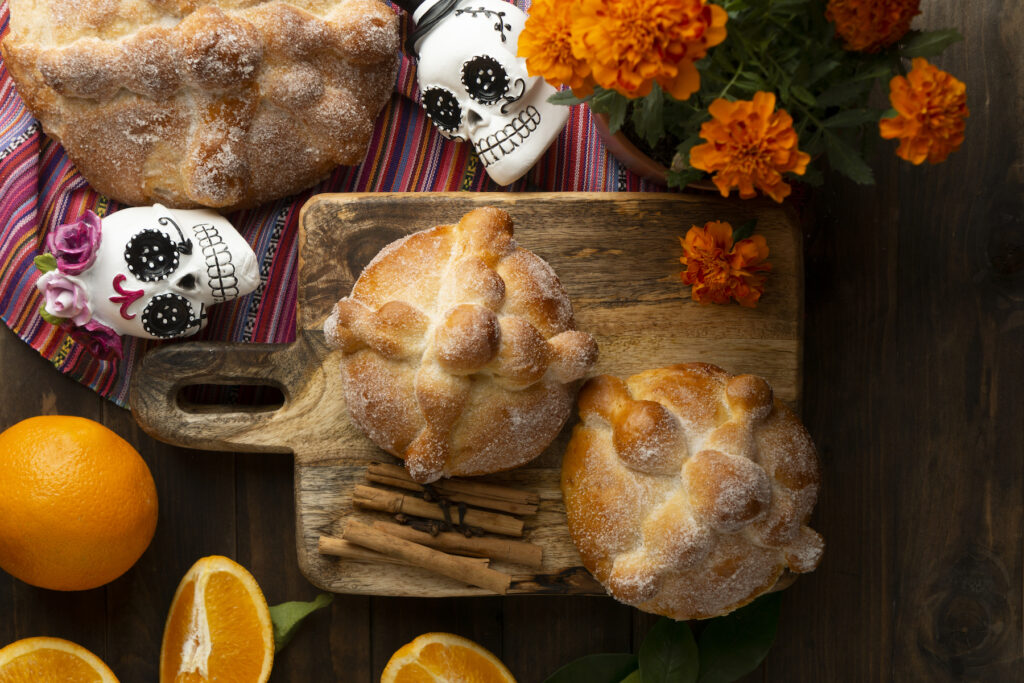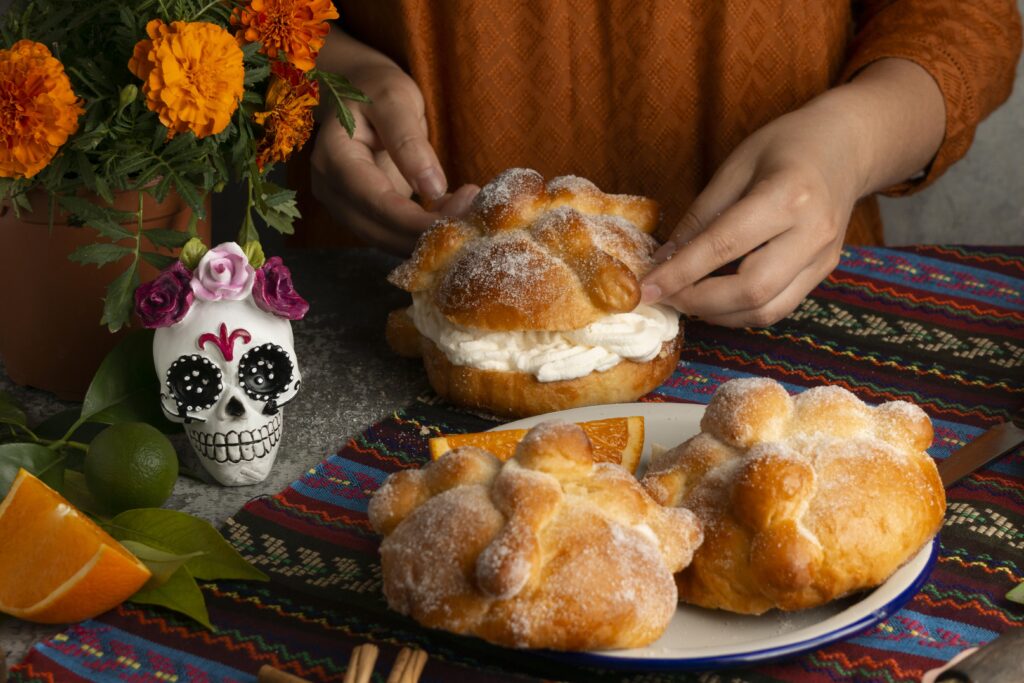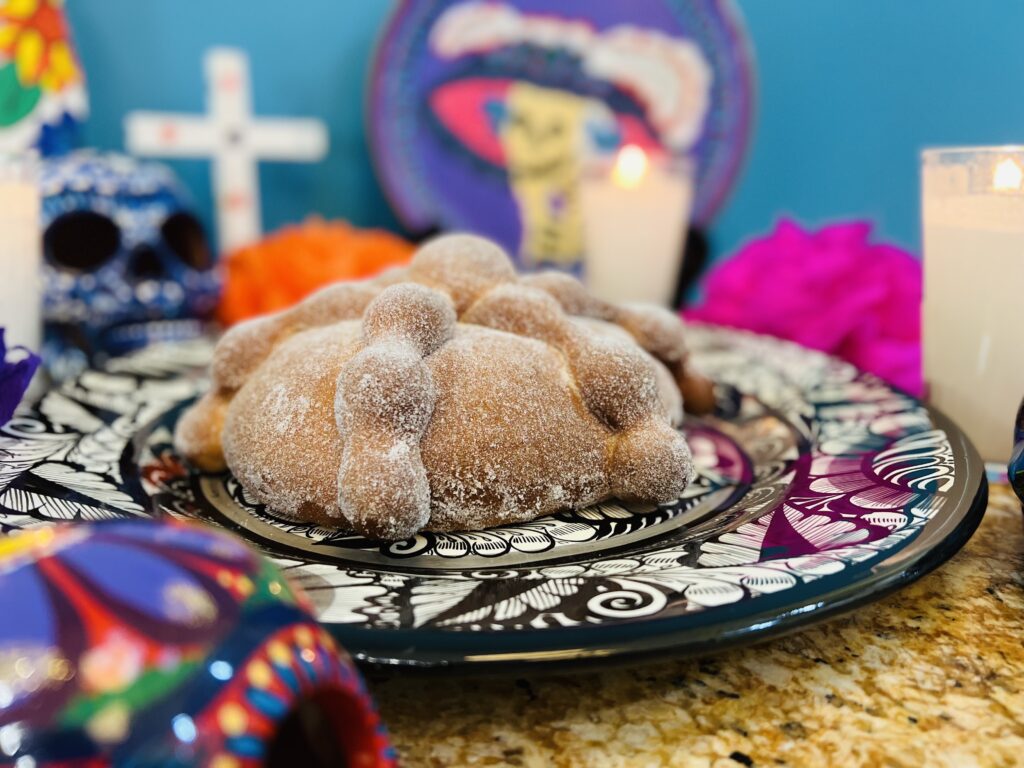A tradition that never dies: Pan de muerto

When we speak of Mexican traditions, the Day of the Dead is one of the most emblematic celebrations. Festivity takes place on November 1st to pay tribute to all the saints and the souls of the children who left this world before us, and November 2nd is the day when the souls of deceased adults visit this dimension.
The elaboration of the bread of the dead, or ‘pan de muerto,’ and its symbolism embrace many stories, but the one preserved to this date alludes to the bread representing a corpse. The small ball that crowns it symbolizes the skull, and the bread strips on the sides refer to the bones that fall in the four directions of the universe.
There are many types of bread in Mexico, like those from the states of Puebla, Tlaxcala, Oaxaca, and Michoacán, each with a traditional preparation. Some are decorated with sugar, while others are egg-washed and sprinkled with sesame seeds or painted red; some are given an oval shape or even carry a dedication. Of course, modernity brings changes, and now they can be filled with pastry cream, milk cream, or, for the sweet tooths out there, with Nutella.

Regardless of its origin, people in Mexico long for these dates, not only for the holiday itself but also for the preparations that come along: the crafting of the altars, the decorative motifs, and the glorious moment of having a slice of this delicacy together with a cup of steaming hot chocolate.
Many places share this tradition and perform a colorful display of altars, catrinas, and bread of the dead, so if you would like to try and explore your culinary talent, we share a recipe for Pan de Muerto to make at home.
Ingredients:
- 70 oz. flour
- 2.8 oz. dry yeast
- 14 oz. milk
- 12 pcs. egg
- 17 oz. of sugar
- 2 tbsp of orange zest
- 1 tbsp of orange blossom water
- ½ cup of warm water (not hot)
- 1 tsp of salt
Preparation:
- Mix the yeast, half the sugar, and water until it bubbles (meaning the yeast is already “awake”). If bubbles do not start to form, repeat the process.
- Add the flour, the rest of the sugar, orange zest, salt, butter, and orange blossom water and integrate the ingredients by hand or in a processor. Add the whole eggs one by one until completely integrated, and add the yeast.
- Knead until the mixture is smooth and manageable and easily separates from the surface you knead on. Let the mixture rest in a large container covered with a damp cloth or plastic wrap in a warm spot in the kitchen until the dough doubles in size—it is very important to consider this when choosing the container to avoid the mixture overflowing.
- Knead again by removing the gas formed. Separate a part of the dough for the decorations (or bones) and form the buns of the desired size with the rest. Place them in a tray with enough space between them, considering they will double in size.
- Shape the bones and the little ball that crowns the bread. Beat the remaining egg and use it as glue to place the pieces to decorate it. Let them stand for approximately one hour to double their size.
- Preheat the oven to 180 degrees and bake for 20 minutes or until the bread is ready. Let it cool.
- To give a final decorative touch, mix a quarter of a cup of water and another of sugar and boil until the sugar is dissolved. With the syrup obtained, varnish the loaves and sprinkle the remaining sugar. If you want to give your bread an interesting twist, you can substitute orange zest for lemon, grapefruit, or mandarin. You can also give it another flavor if you add the petals of two flowers of cempasúchil to the dough, giving it a unique color.

We hope you enjoy it!
.



